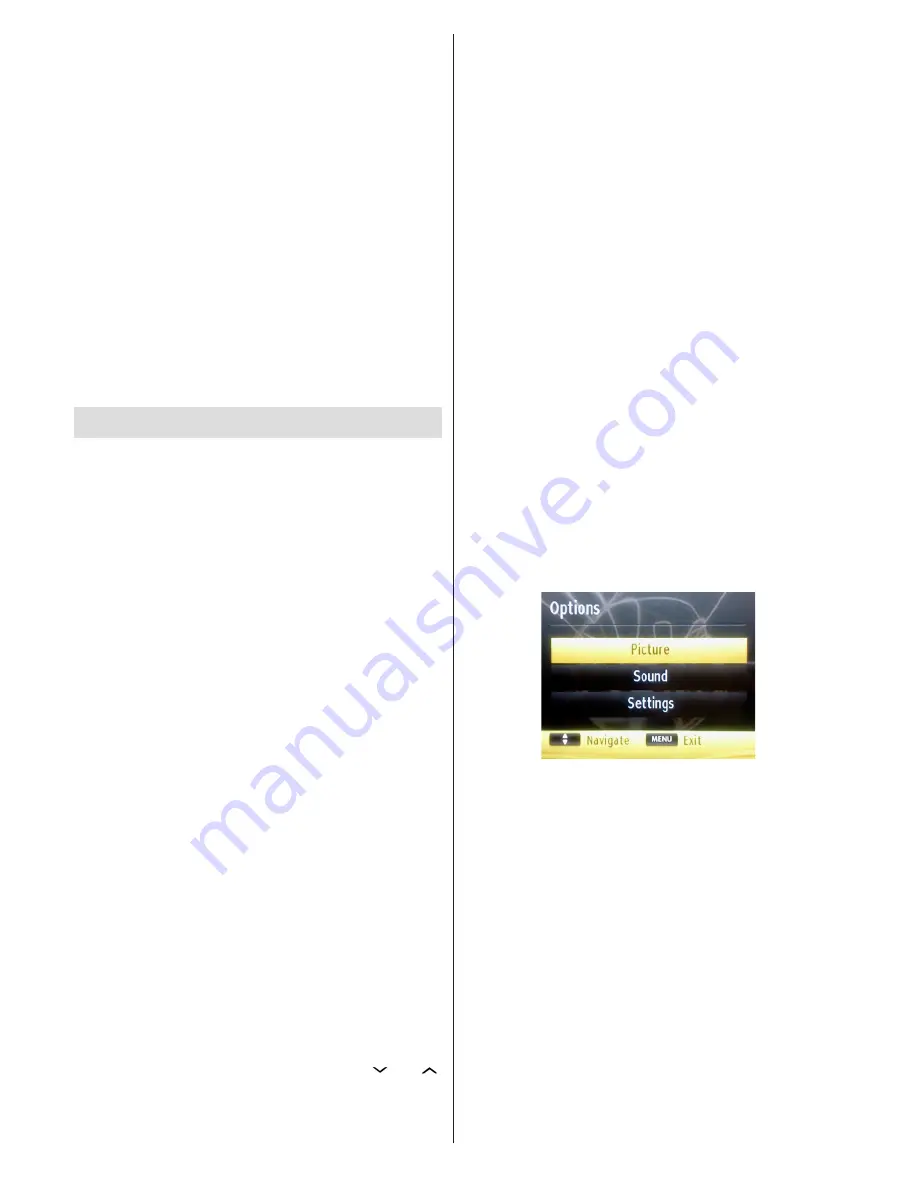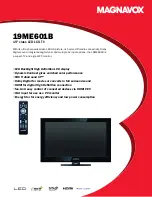
English
- 44 -
Standby:
While going into standby mode, the TV
controls the TKGS table version number whether it is
the last version or not. If any changes are detected,
TV starts to update. On the next switch-on a message
will be displayed to inform the user about the changes.
Background:
When a channel is opened which isn’t
defined in the TKGS channel lists,
the TV controls
the TKGS table version number whether it is the last
version or not. If any changes are detected, TV starts
to update. When the update is completed a message
will be displayed to inform the user about the changes.
Manual:
An update can be started manually any
time. Press the
Menu
button. Highlight
Install and
Retune
and press
OK
. In the sub menu highlight
TKGS Installation
and press
OK
. Than select
Start
Update
and press
OK
.
In the TKGS system, channels can be blocked by the service
provider and Audio/Video transmission will not be available
from these channels.
Media Playback via USB Input
You can connect a USB hard disk drive or USB
memory stick to your TV by using the USB inputs of
the TV. This feature allows you to play files stored in a
USB drive. 2.5” and 3.5” inch (hdd with external power
supply) external hard disk drives are supported.
IMPORTANT!
You should back up your files before
making any connections to the TV set in order to
avoid any possible data loss. Manufacturer will not
be responsible for any file damage or data loss. It is
possible that certain types of USB devices (e.g. MP3
Players) or USB hard disk drives/memory sticks may
not be compatible with this TV. The TV supports FAT32
and NTFS disk formatting. Note: While formatting
a USB hard disk that has 1TB (Tera Byte) or more
file capacity, you can experience problems with the
formatting process.
Quickly plugging and unplugging USB devices, is a
very hazardous operation. Do not repeatedly quickly
plug and unplug the drive. This may cause physical
damage to the USB player and USB device itself. Do
not pull out USB module while playing a file.
Media Browser Menu
You can play photo, music, and movie files stored
on a USB disk by connecting it to your TV and using
the Media Browser screen. To do this, perform the
following: Connect a USB disk to one of the USB
inputs located on the side of the TV.
You can connect two USB devices to your TV. If both
USB devices include music, picture or video files, USB
selection OSD will be displayed on the screen. The
first USB device connected to the TV will be named
as USB Drive1. Select a device by using “ ” or “ ”
button and press
OK
.
Press MENU button and select Media Browser tab by
using Left/Right and OK buttons. Main media browser
screen will be displayed. You can display the related
content by selecting the Video, Music or Picture tab.
Follow the button indications under each on screen
menu for media playback features.
You can set your Media Browser preferences by using
the Settings dialog. With picture and movie playback,
3D settings button will be available. See the section
3D Settings
for more information.
Custom Boot Up Logo
You can personalize your TV to show your favorite
image or photo on screen each time your TV boots
up. To do this, place your favorite image files on a
USB memory stick, insert the memory stick into your
TV and open your images from the media browser
menu. When you have chosen the desired image,
highlight it and press OK to view it in full screen. Press
OK again to choose the image as your custom logo.
If the image file is suitable* you will see it on screen
during the TV’s next boot up.
Note: If you perform an FTI (first time installation) the
TV will return to using the default logo.
*Images must have an aspect ratio of 4:3 or 16:9 and
they must be in .jpeg, .jpg or .jpe file formats.
Using MENU button in Media Browser Mode
Pressing
MENU
button in Media Browser mode
displays the following menu screen:
You can access
Picture
,
Sound
and
Settings
menu
options using this screen. Press
MENU
again to exit
from this screen.
















































